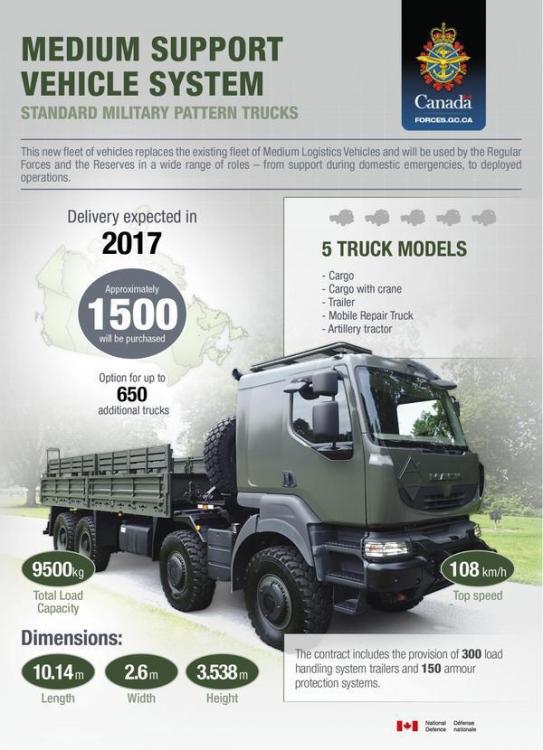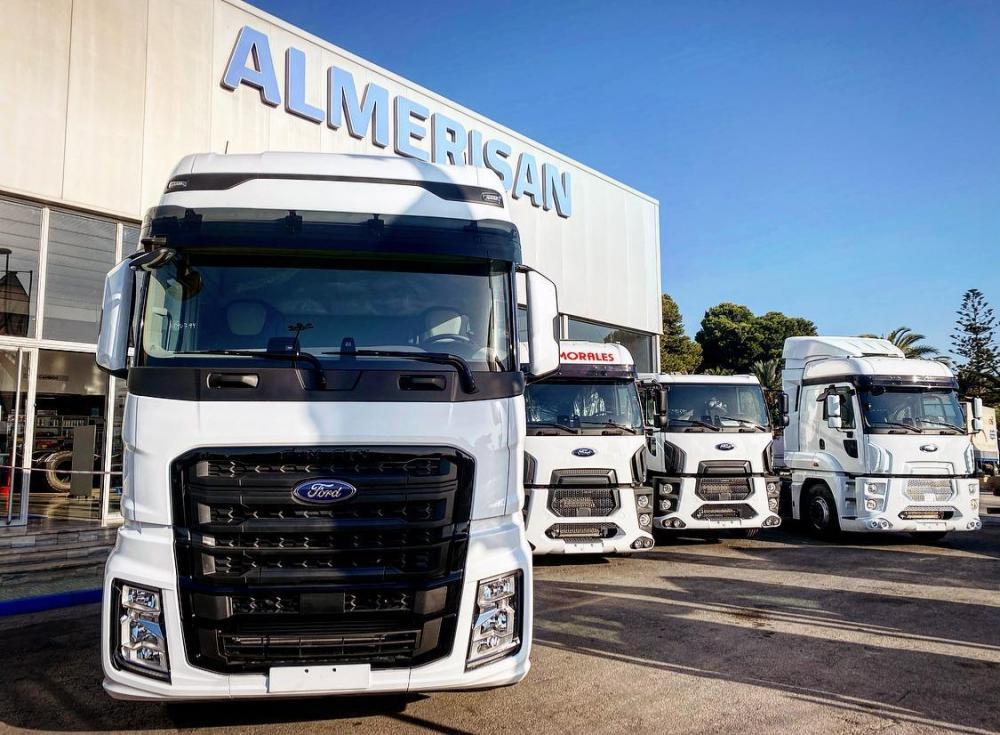
kscarbel2
Moderator-
Posts
18,538 -
Joined
-
Days Won
112
Content Type
Profiles
Forums
Gallery
Events
Blogs
BMT Wiki
Collections
Store
Everything posted by kscarbel2
-
Smaller engines work fine. As it has been for decades, it's all about gearing. Plus there's the torque multiplication effect benefit with Allison-equipped trucks. Plow trucks don't require high speed capability, but rather low speed grunt. Larger engines do obviously offer even greater performance, but they aren't a necessity.
-
Milton did literally deceive everyone. This whole smoke and mirrors show is an advanced science experiment.
-
Nikola Founder Exaggerated the Capability of His Debut Truck Edward Ludlow, Bloomberg / July 17, 2020 After half an hour of promotional videos and big promises, Nikola Corp.’s 13-foot-tall prototype parked atop a rotating stage began to spin. The dramatic music reached a crescendo, lights flicked on and a partially translucent white sheet lifted off the Nikola One. Founder Trevor Milton walked up to applause, put his hands on his side and admired the big rig. “Oh, that thing is so awesome,” he said. “We’ve been waiting so long to show this to the world, you have no idea. It’s hard to even contain my emotion about this.” Milton then made several comments to the crowd at the December 2016 event suggesting the Nikola One was driveable. The statements alarmed people familiar with the truck’s capability, who told Bloomberg News recently that it was inoperable and missing key components to power itself. On Wednesday, Milton said key parts were [in fact] taken out of the vehicle for safety reasons and that it never drove under its own power. “I never deceived anyone,” he said in a phone interview. Nikola shares briefly erased gains and traded down as much as 2.4% as of 3:33 p.m. Thursday in New York. The company still has a more than $22 billion market capitalization. At the event 3 1/2 years ago, Milton said the company had put up a chain to keep people from bumping into any of the vehicle controls. “We’re going to try to keep people from driving off,” he said. “This thing fully functions and works.” Later, he said the truck was not a “pusher,” referring to an inoperable prototype that needed to be nudged onto the stage. The people familiar with the truck, who asked not to be identified discussing sensitive information, said they were concerned about the statements. Gears and motors were missing, and while the words “H2 Zero Emission Hydrogen Electric” were emblazoned on the vehicle, there was no fuel cell on board. “There wasn’t a fuel cell in the truck. We never claimed there was,” Milton said. He confirmed the motors and gears weren’t in the vehicle for safety reasons. Milton’s statements are coming under greater scrutiny following Phoenix-based Nikola’s share listing earlier this month. The stock’s initial surge has turned small investments by manufacturers such as CNH Industrial NV and Jeff Ubben’s ValueAct Capital Management into stakes worth billions. The gains reflect optimism that Nikola could become a Tesla Inc.-like disruptor, though established truck companies are planning their own greener alternatives to diesel-powered big rigs. “Manufacturing trucks is a highly competitive business, and all the established players -- Daimler, Volvo, Scania and others -- all have low- and zero-emissions programs under development,” said Colin McKerracher, head of advanced transport for researcher BloombergNEF. “This is going to be a crowded field.” It’s taking longer for Nikola to enter the field than Milton hoped. He said at the time of the unveiling of the One that deliveries would start in 2020. Nikola is now less committal about a delivery date 3 1/2 years later. The company is forecasting no revenue for this year. Production plans for the One will be announced once Nikola has established a “robust” refueling infrastructure, the company said in its March public-offering filing. Its initial hydrogen stations won’t be operational until 2022 or later. Nikola is outsourcing much of the work for its debut model, a battery-electric big rig called the Tre, which is based off a truck built by CNH Industrial. Sales are expected to begin next year. Its first fuel-cell truck, the Nikola Two, is due in 2023. Despite its challenges with starting production, investors briefly valued Nikola higher than Ford Motor Co. earlier this month. Its shares were listed following a reverse merger with a blank-check company and promptly soared in the midst of retail-investor fervor for insolvent companies. Unlike Elon At first glance, Milton seems like a clone of Elon Musk, whose better-known company goes by the other half of the name of famed electrical inventor Nikola Tesla. Both charismatic and outspoken leaders have profited from dramatic run-ups in their companies’ share prices this year. But in some respects, the two executives’ businesses are quite different. Whereas Musk, 48, is notorious for setting stretch goals that Tesla fails to achieve or does so later than its chief executive officer hoped, Nikola’s targets for the coming years are relatively conservative. The company expects to have its first $1 billion year of revenue in 2023. The truck factory it plans to build south of Phoenix is projected to reach full production of about 30,000 fuel-cell electric vehicles in 2027 and 15,000 battery-electric vehicles the following year. Tesla by comparison expects its deliveries to “comfortably” exceed 500,000 vehicles this year. Its total revenue topped $24.5 billion in 2019. Matching Musk In other respects, Milton is following in Musk’s footsteps. Nikola has succeeded in ginning up consumer and investor interest in a product years before it’s ready to be delivered, much like Tesla’s CEO has done with several products. Tesla also has raised money off customers by charging deposits for vehicles that take years to get to market. Nikola took the same approach with the One, though Milton says the company returned deposits to reservation holders because of criticism Tesla fielded over its funding strategy. He is now planning to take deposits for a truck model the company has in development. Nikola touts the 14,000 reservations it has for its future fuel-cell electric trucks and says they are worth about $10 billion of sales, but that value is theoretical. The company told prospective investors in April that it was negotiating with fleet partners to convert pre-orders into binding contracts with deposits. Musk also has hosted an unveiling with a product that didn’t actually work. In October 2016, he staged a solar roof product demo with shingles that weren’t functional to help clinch shareholder approval for Tesla’s $2 billion acquisition of SolarCity. In January, Tesla’s insurer paid out $60 million to settle investor claims that directors allowed Musk to dupe the electric-car company into overpaying for SolarCity. Musk is the only member of Tesla’s board who didn’t settle. ‘Best Decision’ Milton’s path to billionaire status was an unusual one. Before founding Nikola six years ago, he flunked out of high school, then passed the General Educational Development test, according to a Twitter post. He later dropped out of college. A self-described serial entrepreneur, he founded alarm-system and online-retail startups and ran a natural gas storage-technology company before Nikola. With the Nikola One, Milton says he called an audible before the 2016 unveiling. The company had initially tried to build trucks powered by natural gas-powered turbines. Fuel cells and batteries “were not far enough along” to build zero-emission trucks, he said in an interview last week. He went to the board anyway and called for Nikola to make the switch. “They were like ‘no way, you’ve already got millions of dollars into this turbine, the truck is ready to go, what are you thinking, man?’” Milton said of the board’s response. “I just put my foot down and said you’ve got to trust me and we are doing it. It’s a damn good thing I did it. It’s the best decision we ever did.” BloombergNEF is less bullish, predicting that global Class 8 heavy-duty fuel cell truck sales won’t reach 10,000 units annually until around 2030. The researcher sees 90% of heavy trucks continuing to be powered by diesel in 2040. “Fuel cell technology has improved, but there’s still a long way to go on the economics to be fully cost competitive with other options,” McKerracher said in an email. “Scaling up quickly would require a huge push on policy support.”
-
U.S. Orders Up to 600 Million Doses of Pfizer, BioNTech Covid Vaccine Bloomberg / July 22, 2020 U.S. health officials agreed pay $1.95 billion for 100 million doses of a vaccine made by America’s Pfizer Inc. and Germany’s BioNTech SE. The companies will receive payment upon the receipt of the doses, following regulatory authorization or approval. The U.S. government also can acquire up to an additional 500 million doses. The U.S. has already ordered experimental shots developed by the University of Oxford and AstraZeneca Plc. The vaccine would be available to the American people for free, according to the government. Pfizer shares rose more than 5% in pre-market trading. BioNTech climbed about 7%.
-
Volvo Group subsidiary Mack Defense will continue to provide support services for the Canadian army through 2025. Public Services and Procurement Canada (PSPC) recently exercised its option to extend the Mack Trucks subsidiary’s in-service and support contract for an additional five years, running from 2020 to 2025, and covering more than 1,500 rebadged Renault Kerax 8x8 Medium Support Vehicle System (MSVS) Standard Military Pattern (SMP) vehicles. “Mack Defense’s MSVS SMP vehicle systems provide critical capabilities that the Canadian Armed Forces depend on,” said David Hartzell, president of Mack Defense. “We look forward to maximizing the uptime of these vehicles as we continue to provide these support services.” The contract covers all MSVS SMP vehicles, trailers and armored protection systems, Mack said, and will enable Mack Defense to provide support services and the provision of spare parts and materials for level one and two maintenance tasks performed by the customer. Equipment requiring in-depth maintenance, such as repair and overhaul activities or warranty repairs, will be handled by a facility in the area of Quebec City, Quebec. Mack Defense will provide support by delivering spare parts to Canadian Forces Depots (CFD) in Edmonton, Alberta and Montreal, Quebec. Mack Defense was awarded two contracts in 2015 valued at $725 million CAD by the Department of Public Works and Government Services Canada (now PSPC), on behalf of the Department of National Defense, to deliver more than 1,500 8x8 MSVS SMP trucks and to provide in-service support for the fleet. The MSVS SMP is available in a number of variants, including cargo, material handling cranes, load handling systems (LHS) and mobile repair trucks (MRT). The 1,587th and final MSVS SMP vehicle was delivered in February 2020. The program also delivered 322 trailers and 161 armored protection system cabs. .
-
Jon Harris, The Morning Call / July 17, 2020 For [Volvo Group subsidiary] Mack Trucks, 2020 already was a down year, a cyclical occurrence in the heavy-duty truck market. The coronavirus pandemic has downshifted expectations even further. The truckmaker received 2,973 orders in the second quarter, down 21% from a year earlier, according to a report Friday from Volvo Group, its Swedish parent company. The number of delivered Mack trucks in the quarter hit 2,302, a 71% drop from almost 8,000 a year ago when the Lower Macungie Township assembly plant worked through a hefty order backlog when times were good. “Before the pandemic, we expected the overall North American heavy truck market to be down about 30% compared to 2019, and now the decline will be significantly sharper,” Mack spokesperson Christopher Heffner said. The Lower Macungie plant already had adapted to reduced market demand, laying off 305 employees in February. The plant, which suspended production March 19 to stem the virus’ spread before resuming production mid-May, now employs about 2,100 people and most of them are back at work, Heffner said. He confirmed the plant has had “a few confirmed cases” of the virus among its employees, cases that activated Mack’s tracing and cleaning protocols. “We are not planning further layoffs at this time,” Heffner said. “We will continue to monitor the market and will make employment decisions based on those conditions.” To reduce costs, Volvo is, however, shrinking its white-collar workforce by about 4,100 positions during the second half of 2020. While about 1,250 job cuts will come in Sweden, Heffner said the company plans to eliminate about 450 positions at its U.S. headquarters in Greensboro, North Carolina, reductions that will affect some Mack employees stationed there. Only two positions will be eliminated in the Lehigh Valley. While the North American truck market was significantly stalled in April, Volvo’s report said customer activity has gradually improved since. “However,” Volvo President and CEO Martin Lundstedt wrote, “there is still significant uncertainty about the future economic development and demand for our products.” Mack’s market share in North America, however, increased to 7.6% in the quarter, up from 6.4% a year ago. “The market mix does favor our traditional strengths in segments like construction and refuse, and at the same time we’re seeing sales with new customers in those traditional segments as well as growth segments like regional and long haul,” Heffner said. Also in the quarter, Mack announced June 25 that its Mack Defense subsidiary relocated its headquarters from Upper Macungie to the Mack Customer Center in Allentown [a cost-cutting measure], giving the defense contracting business access to the facility’s test track and industrial space.
-
Briggs & Stratton files chapter 11 bankruptcy
kscarbel2 replied to kscarbel2's topic in Odds and Ends
I've been expecting this. -
Bloomberg / July 20, 2020 Another icon of post-war American suburbia went bust as Briggs & Stratton Corp. declared bankruptcy, felled by weak sales, too much debt and a final push over the edge from the coronavirus pandemic. The world’s biggest maker of gasoline engines for outdoor power equipment sought protection from creditors in a St. Louis bankruptcy court on Monday, citing debts of more than $1 billion. The filing included a $550 million bid for the company from KPS Capital Partners, a New York private equity firm, which promised to keep Briggs & Stratton in business without the crushing debt that plagued the century-old company. KPS, whose portfolio includes TaylorMade golf clubs and Life Fitness gym equipment, specializes in manufacturing companies. It agreed to serve as the lead bidder in a court-supervised auction, setting a minimum price for any eventual sale, and it’s contributing to a bankruptcy loan that will keep Briggs & Stratton operating, according to a statement. KPS said it has already negotiated a new contract with the United Steelworkers of America. If you’ve ever pushed or driven a lawn mower in your backyard or wielded a snow-blower, chances are the engine was made by Briggs & Stratton, which supplied brands such as Craftsman and Snapper. If you hired a lawn service instead, some of its equipment probably had Briggs & Stratton components, too; it sold products to Deere & Co., MTD Products Inc. and Husqvarna Outdoor Products Group. The Wisconsin-based company’s product lineup also includes power generators and pressure washers, made by 5,200 employees as of the end of last year. It employed more than 9,000 in 2005. The company has been pressured by falling sales, tied in part to the pricing power of mass merchandisers such as Home Depot, Lowe’s and Walmart, according to regulatory filings. It didn’t help that Sears Holdings Corp., which accounted for a large chunk of sales, went bankrupt in 2018. Briggs & Stratton said it also faces competition from big rivals such as Honda and Kawasaki. On top of that, Briggs & Stratton’s news release about the bankruptcy cited pressures from the Covid-19 pandemic, which “have made reorganization the difficult but necessary and appropriate path forward to secure our business.” The company, led since 2010 by Chief Executive Officer Todd Teske, is headed for a third straight annual loss, and the stock -- which topped $40 in 2004 -- has been selling for less than 80 cents. Trading was halted Monday while the news was disseminated, but at $550 million, KPS’s offer wouldn’t be enough to cover all the outstanding obligations, which means that shareholders could be wiped out. The company’s junior bonds would have to be paid off before stockholders get anything, and those notes were quoted recently at about 10 cents on the dollar -- a sign that full repayment is unlikely. Acquisitions Planned “KPS intends to grow the new Briggs & Stratton aggressively through strategic acquisitions,” said Michael Psaros, co-founder and co-managing partner of KPS, in a statement. “The new Briggs & Stratton will be conservatively capitalized and not encumbered by its predecessor’s significant liabilities.” The offer by KPS would need court approval and could still be topped by a rival bidder for the company, whose headquarters is in Wauwatosa, less than 10 miles from downtown Milwaukee. Briggs & Stratton said in its statement that it lined up $677.5 million of debtor-in-possession financing that will help fund operations during the court reorganization. KPS said it’s contributing $265 million of that sum, and lenders including Wells Fargo & Co., Bank of America Corp., BMO Harris Bank and PNC Business Credit will provide exit financing. Briggs & Stratton began as an informal partnership in 1908, initially focused on auto parts under founders Stephen F. Briggs and Harold M. Stratton, according to the company’s website. (“Briggs was the inventor and Stratton was the investor,” the company said.) They ventured into areas such as engine-powered bicycles, electric refrigerators and coin-operated paper towel dispensing machines, and their company blossomed alongside American suburbs dotted with single-family homes and grass-covered yards. Global Reach KPS, based in New York, runs the KPS Special Situations Funds with more than $11.4 billion of assets. The firm said its portfolio companies run 150 manufacturing facilities in 26 countries with about 23,000 employees. Kirkland & Ellis is legal counsel for KPS. Briggs & Stratton previously hired Houlihan Lokey Inc. to advise it on strategic options including refinancing its debt, selling assets and cutting costs. The case is Briggs & Stratton Corporation, 20-43597, U.S. Bankruptcy Court, Eastern District of Missouri (St. Louis).
-
Nikola Plummets After Warrant Call Creates Selling Pressure Bloomberg / July 20, 2020 Nikola Corp. shares nosedived on Monday. Some investors will now be able to buy the company’s stock at a fraction of recent prices. The electric-vehicle company late Friday said a sale of shares related to certain warrants was declared effective, which means the warrant holders will now be able to acquire one share of Nikola at $11.50 -- a 76% discount to Friday’s close of $48.84. Apart from those nearly 24 million shares that are now exercisable through warrants, the filing also registered as many as 53.4 million shares held by private investors, such as mutual funds and other large institutions. “We believe the potential for a portion of these 77 million shares to hit the market through early investors selling, could create large technical selling pressure on Nikola stock,” Deutsche Bank said Monday. Nikola shares dropped as much as 22% to $38 in New York trading, after gaining 373% this year through Friday.
-
Parking brake on 1986 Midliner air over hydraulic
kscarbel2 replied to Sonny Chapman's topic in Air Systems and Brakes
It's been years. I can't imagine how the lines to the valve would be all wrong. -
In the year 2020, there remain a loyal following of 7.8L-powered Ford Louisville Series operators. They take those trouble-free dump trucks out and make money every day.
-
Parking brake on 1986 Midliner air over hydraulic
kscarbel2 replied to Sonny Chapman's topic in Air Systems and Brakes
The parking brake control valve is located between the driver’s seat and the passenger bench seat. -
Excellent work! I like your tilt hood conversions!
-
Bob, the once great WSJ has lost all my respect. Though more subtle than CNN, the WSJ is clearly trying to steer people’s opinions with biased press rather than merely reporting the news.
-
Ford Trucks International / July 11, 2020
-
DAF Trucks Press Release / July 16, 2020 Service, reliability and total package behind decision to choose DAF DAF has delivered 44 fully-fitted city sanitation vehicles to Belgrade, the capital of the Republic of Serbia. The consignment consists of LF and CF trucks with diverse chassis configurations and a wide range of bodies. DAF vehicles now make up half of the fleet of 200 city sanitation vehicles in Belgrade. The decision to award the most recent tender once again to DAF was based on three key elements: a proven track record on service, fleet reliability and the fact that the Gradska Ćistoća city cleaning company can purchase and service the fully-fitted vehicles, including bodies and equipment, directly from its local dealer, Braca Crnomarkovic. Garbage trucks Gradska Ćistoća is responsible not only for all household waste collection in Belgrade but also for cleaning the streets and keeping the roads passable during snowfall. In addition to waste collection trucks fitted with rear loaders, side loaders and top loaders with a capacity of 18 and 22 m3, the order also includes tank trucks for spraying the streets and sweeper trucks that can be easily converted into snow ploughs in the winter. Serbian capital growing “Belgrade continues to grow as a city, as does its population,” according to Marko Popadic, director of Gradska Ćistoća. “Currently, there are 1.7 million people living in the city and its suburbs. So the workload is increasing and that’s why our services have to become better and faster. This means that the service provided by the DAF dealer organisation and the reliability of the vehicles is of crucial importance to us. Replacing our existing vehicles with new DAFs has helped make our staff’s work more efficient, safer and cleaner.” Extremely proud “We have never seen an order of this size before in Serbia,” says Richard Zink, member of the DAF Board of Management with responsibility for Marketing & Sales. “Together with DAF dealer Braca Crnomarkovic we have delivered a total package that perfectly matches the needs of Gradska Ćistoća. This city cleaning company now has a fleet of around 100 DAFs working to keep the streets of Belgrade clean. And that’s something we’re extremely proud of.” .
-
Ford Trucks International / July 17, 2020 In southeastern Spain, Ford Trucks has a new dealership in the port city of Almería. Almerisan S.L. has a great location and an excellent team of professional truck people! #PoweredByFordTrucks #SharingTheLoad .
-
However, if your under 19,500 truck pulls a large trailer, welcome to a new world of regulation.
-
Volvo doesn't even offer the MD as a tractor, and you're dreaming they might offer a tandem configuration ?
-
Mack part-no. 20QE3183R
-
You're thinking logically, like a truck people would.
-
It would not surprise me if the MD medium is cancelled right out of the gate. Volvo is far too late, that segment is already full. Remember, they're renting the plant in a low-buck way that allows them to quickly and cheaply walk away. There's zero commitment to the MD.
BigMackTrucks.com
BigMackTrucks.com is a support forum for antique, classic and modern Mack Trucks! The forum is owned and maintained by Watt's Truck Center, Inc. an independent, full service Mack dealer. The forums are not affiliated with Mack Trucks, Inc.
Our Vendors and Advertisers
Thank you for your support!








